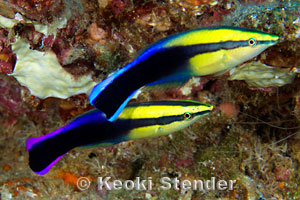Stand up for workers all over the world because it’s International Workers’ Day (a.k.a. Labour Day)! It’s a day to pay tribute to everyone who has worked hard in their fields for the success and well-being of our nation: architects, designers, engineers, cleaners and many, many more. In the natural world, working is also part and parcel of animals’ lives for their families and their survival. Ants and bees are perhaps the most widely known hardworking animals. But, do you know of other animals that perform similar jobs as people do? As we celebrate this holiday with our family and friends, let’s take a moment to appreciate and applaud some of the most industrious animals in the natural world!
Beavers
One of nature’s greatest engineers, the beaver is the only animal capable of changing their environment after man! These large rodents work diligently to construct dams in rivers or streams to transform fields and forests into large, nice and cosy ponds as their homes for winter. Preparation for this massive construction project starts all the way from late summer to fall. With the help of their strong teeth and powerful jaws, the beavers are able to chip away at tree trunks to acquire logs and branches for construction. After being broken down into smaller pieces, the beavers would carry the materials to the construction site and start building the dam by laying sticks and stacking branches in the mud.
Satin Bowerbirds
The male Satin Bowerbird is perhaps the most accomplished interior designer in the animal kingdom. The males spend lots of hard work and time to build and decorate nests to attract females’ attentions. Pebbles, shells and flowers are among some of the artistic objects the males use in their creative nest design.


Cleaner Wrasse
Just like how we pay great attention on public health and hygiene, cleanliness is also an important concern in the marine world. And this heavy responsibility lies on the Cleaner Wrasse. These tiny fishes work 24/7 scrubbing off unwanted parasites and dead scales on the fins, tails and even mouths of other reef fishes. The reward of their hard work is the feast of parasites! The Cleaner Wrasse has a long list of clients, including larger fishes which might be potential predators!

Aren’t all these creatures amazing?! Not only do animals work long days and nights to survive, they also work hard in maintaining our ecosystem with their irreplaceable skill sets, such as acting as pollinators and decomposers. On this Labour Day, let’s also celebrate the contributions animals have made!
Happy Labour Day!
References:
National Geographic. (n.d.). Beaver. Retrieved from: http://www.nationalgeographic.com/animals/mammals/b/beaver/
Animal Planet. (n.d.) The Beauticians. Retrieved from: http://www.animalplanet.com/wild-animals/5-the-beauticians/
Animal Planet. (n.d.) The Builders. Retrieved from: http://www.animalplanet.com/wild-animals/9-the-builders/
Animal Planet. (n.d.) Interior Decorators. Retrieved from: http://www.animalplanet.com/wild-animals/6-interior-decorators/
Words by: Ho Lijean



